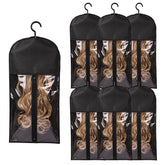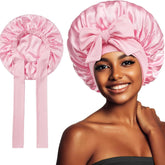Why shoppers are ditching salons for £8 30‑minute hair dye

Across social feeds and supermarket aisles, a surge in interest for quick, budget-friendly at‑home hair dye has caught attention. A new wave of shoppers are saying they’ll “never go back to the salon” after trying an £8, 30‑minute Garnier dye that promises fast colour with minimal fuss. The shift highlights evolving consumer priorities — convenience, cost and time — but also raises practical and professional questions about safety, colour longevity and the future of salon colour work.
What’s driving the move to at‑home colour?
Several factors underpin this trend. Rising living costs and tighter household budgets mean more people are looking to inexpensive alternatives for regular maintenance like root touch‑ups. Time pressures — busy work schedules, childcare and reduced leisure time — make a 30‑minute routine appealing compared with salon appointments that can take hours. Social media has amplified these products, with influencers and everyday users sharing quick transformations and straightforward results that feel accessible to a broader audience.
Benefits — and the trade‑offs
At‑home dye offers undeniable advantages: affordability, speed and the convenience of avoiding an appointment. For routine maintenance, such as covering regrowth or refreshing a single tone, boxed colour can be effective when used correctly. However, there are trade‑offs worth considering:
- Professional colourists assess hair history, porosity and condition — boxed kits cannot replicate that personalised diagnosis.
- Complex services (balayage, multi‑tonal lifts, corrective work) require salon skills and technical equipment.
- Results from boxed dyes can vary with hair base shade, prior colour and application technique, sometimes producing unexpected tones or uneven coverage.
How to use an at‑home dye safely and effectively
If you’re tempted to try a fast, budget kit at home, a cautious approach will reduce risk and improve the outcome. Follow these steps:
- Always do a patch test 48 hours before use to check for allergic reaction, even if you’ve used similar products before.
- Perform a strand test on an inconspicuous section to preview the final shade and check development time.
- Follow the instructions precisely — timing matters. Leaving dye on too long or too short can affect shade and damage.
- Use gloves and apply on clean, dry hair, unless the product instructions advise otherwise.
- Start with root applications if covering regrowth, then work the length to avoid overprocessing ends.
- Choose a shade close to your natural or current colour to reduce the chance of surprises.
- When in doubt, seek a professional consultation for dramatic changes or colour correction.
What this means for salons and professionals
The rise in at‑home colour doesn’t necessarily spell the end of salon colour — it alters the landscape. Salons may see more clients seeking specialised services that cannot be replicated with a box dye: complex colour melts, precision highlights, corrective work and treatments that repair or protect hair after chemical services. Meanwhile, some salons have adapted by offering express services, maintenance packages or education for clients on how to extend salon results between visits.
For colour professionals, the trend is both a challenge and an opportunity. It encourages salons to emphasise expertise, bespoke services and the value of professional colour diagnosis. It also opens dialogue about safe home use: stylists can advise clients on the best at‑home practices and which products are suitable for their hair type and history.
Regulation, safety and ingredient transparency
Affordable boxed dyes are regulated for consumer safety, but shoppers should still pay attention to ingredient lists and allergy warnings. Look for clear guidance on whether a product is permanent, demi‑permanent or a gloss — each behaves differently and affects the hair in distinct ways. If you have particularly fragile or previously chemically treated hair, consult a professional before applying further oxidative colour at home.
Takeaway
At‑home 30‑minute dyes offer a compelling combination of cost and convenience for many people seeking simple colour updates. They’re most appropriate for root touch‑ups and modest tone changes. For transformative colour work, grey blending, or correction, professional salons remain the safer choice. Whatever route you choose, prioritise safety: patch and strand tests, reading instructions, and being realistic about expected results will help you get the best outcome while protecting hair health.
Stay Updated: Read more UK hair industry news and innovations on Hairporium News.







